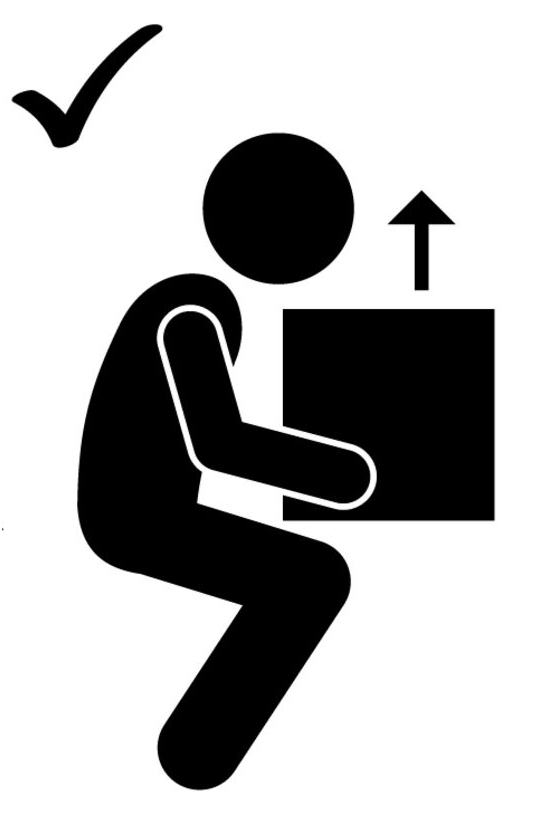What is good posture?
Posture is the position in which you hold your body while standing, sitting or lying down. Good posture involves training your body to stand, walk, sit and lie in positions where there is less stress exerted on supporting muscles and ligaments.
Proper posture includes:
- Keeping bones and joints in the correct alignment so that muscles are being used properly, thereby reducing fatigue.
- Decreasing the abnormal wear of the joints.
- Decreasing stress on the ligaments holding the spine.
- Preventing the spine from becoming fixed, often in a “hunched” position.
- Preventing backache, which if persistent, may imply some damage to the intervertebral disc(s), the cushion(s) between the vertebrae.
Correct sitting posture

- Sit up with your back straight and your shoulders back. Your buttocks should touch the back of your chair.
- A small, rolled-up towel can be used to help you maintain the normal curves in your back.
- Distribute your body weight evenly on both hips.
- Bend your knees at a right angle. Keep your knees even with or slightly higher than your hips. Your legs should not be crossed.
- Keep your feet flat on the floor.
- Try to avoid sitting in the same position for more than 45 minutes.
- At work, adjust your chair height and work station so you can sit up close to your work and tilt it up at you. Rest your elbows and arms on your chair or desk, keeping your shoulders relaxed.
- When sitting in a chair that rolls, don't twist at the waist while sitting. Instead, turn your whole body.
- When standing up from the sitting position, move to the front of the seat of your chair. Stand up by straightening your legs. Avoid bending forward at your waist. Immediately stretch your back by doing 10 standing backbends.
Correct driving posture
- Use a back support at the curve of your back. Your knees should be at the same level or higher than your hips.
- Move the seat close to the steering wheel to support the curve of your back. The seat should be close enough to allow your knees to bend and your feet to reach the pedals.
Correct lifting posture

- If you must lift objects, do not try to lift objects that are heavier than 15 kilograms.
- Before you lift a heavy object, make sure you have firm footing as well as a firm grasp of the object.
- To pick up an object that is lower than the level of your waist, keep your back straight and bend at your knees and hips. Do not bend forward at the waist with your knees straight.
- Stand with a wide stance close to the object you are trying to pick up and keep your feet firm on the ground. Tighten your stomach muscles and lift the object using your leg muscles. Straighten your knees in a steady motion. Don't jerk the object up to your body.
- Stand completely upright without twisting. Always move your feet forward when lifting an object.
- If you are lifting an object from a table, slide it to the edge to the table so that you can hold it close to your body. Bend your knees so that you are close to the object. Use your legs to lift the object and come to a standing position.
- Avoid lifting heavy objects above waist level.
- Hold packages close to your body with your arms bent. Keep your stomach muscles tight. Take small steps and go slowly.
- To lower the object, place your feet as you did to lift, tighten stomach muscles and bend your hips and knees.
Correct sleeping posture
No matter what position you lie in, the pillow should be under your head, but not your shoulders, and should be of some thickness so that your head can be in a normal position.
- Try to sleep in a position which helps you maintain the curve in your back (such as on your back with a pillow under your knees or a roll under your lower back; or on your side with your knees slightly bent).
- You may want to avoid sleeping on your stomach, especially on a soft mattress, since this can cause back strain and can also be uncomfortable for your neck.
- Select a firm mattress that does not sag.
- You can consider using a back support at night to make you more comfortable. A rolled sheet or towel tied around your waist may be helpful.
When standing up from the lying position, turn on your side, draw up both knees and swing your legs on the side of the bed. Sit up by pushing yourself up with your hands. Avoid bending forward at your waist.
Bad postures over long periods of time can lead to chronic back pain and persistent spinal problems. Our spine specialist has given many lectures as an invited speaker all around Southeast Asia, in Indonesia and Vietnam to speak about new techniques and minimally invasive spinal treatment. Visit us today!
